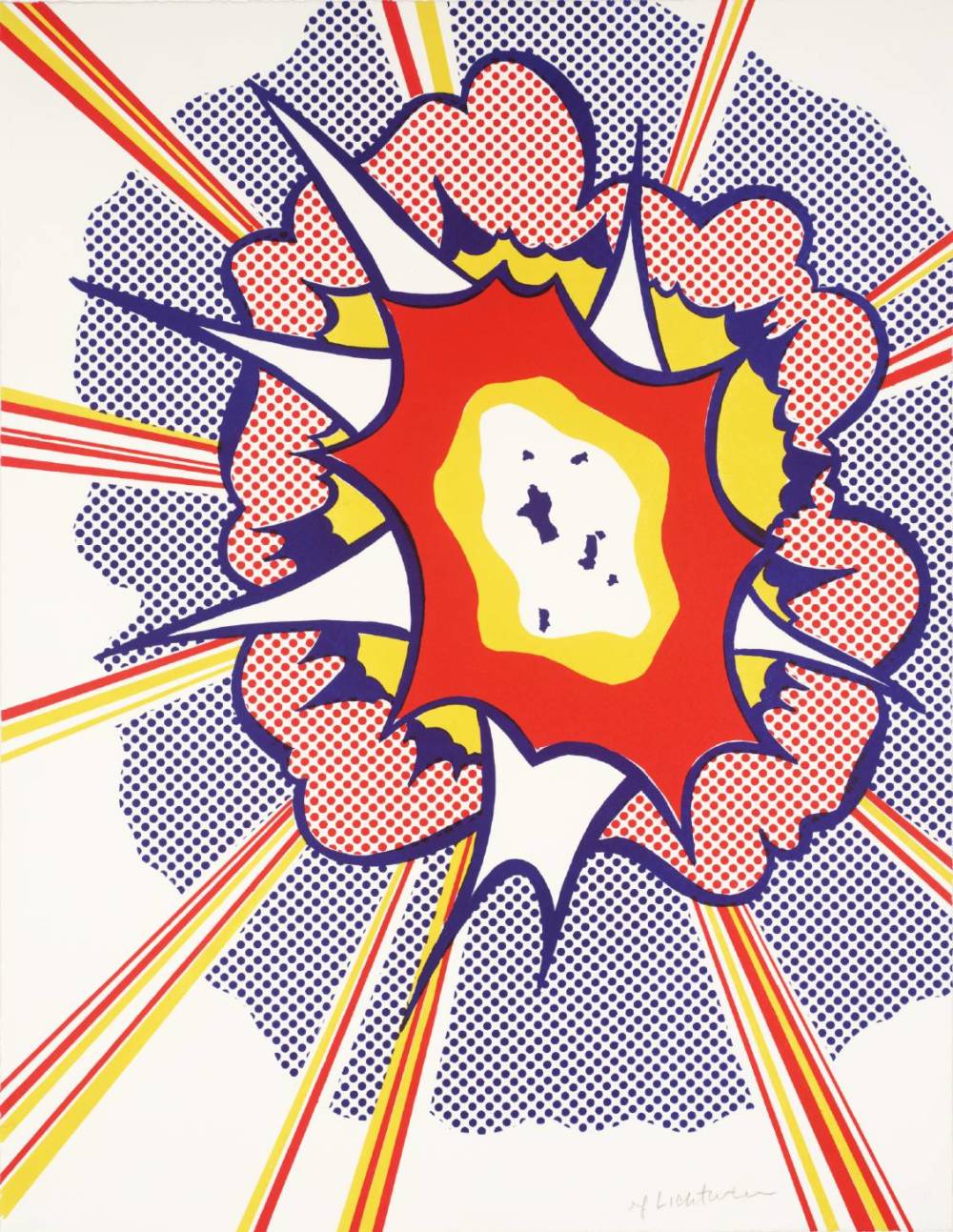
Roy Lichtenstein
Explosion, 1965-60
Often considered one of the only true American art forms, the comic has a long history that spans multiple centuries and a variety of cultures. While the first “comic book” as we know them today, “Famous Funnies,” was published in 1934, the components used to create such unifying and universal works derive from historical records, artistic movements, political unrest, religious devotion, and other elements borrowed from cultures around the world.
Visual storytelling has existed as long as the human race itself. Ancient Egyptian scrolls have been found dating back to 1300 B.C.E., and illustrated scrolls from Japan, such as The Tale of Genji, date back to the eleventh century. The Codex Borbonicus, a 45-foot long Mesoamerican document discovered by Hernan Cortes in 1519, contains 36 accodian-folded pages of brightly painted images, symbols, and figures describing Aztec religious beliefs and customs. These examples all follow the concept of sequential storytelling, in which images are laid in a purposeful sequence in order to tell a visual story. Sequential storytelling is an essential element of comics, yet it also appears in countless aspects of our everyday lives, from stained glass windows to airplane emergency instructions. With such a rich tapestry of influence, it is no wonder that comics are such a big part of our everyday lives.
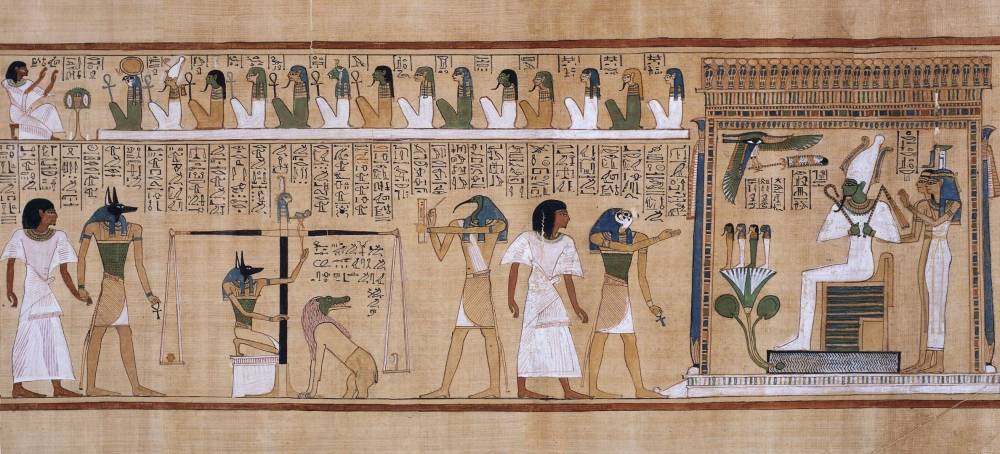
Hunefer
Egyptian, 1310 B.C.E, Book of The Dead
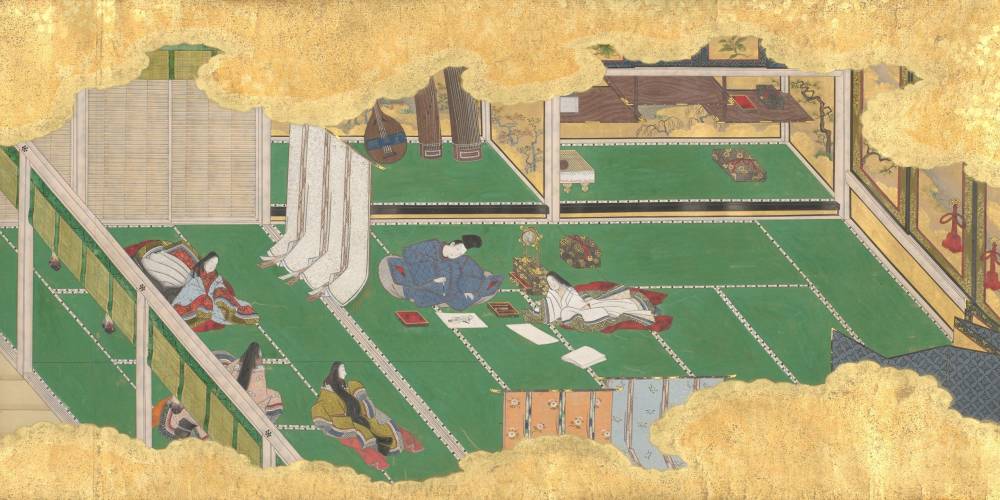
The Tale of Genji
Eleventh Century
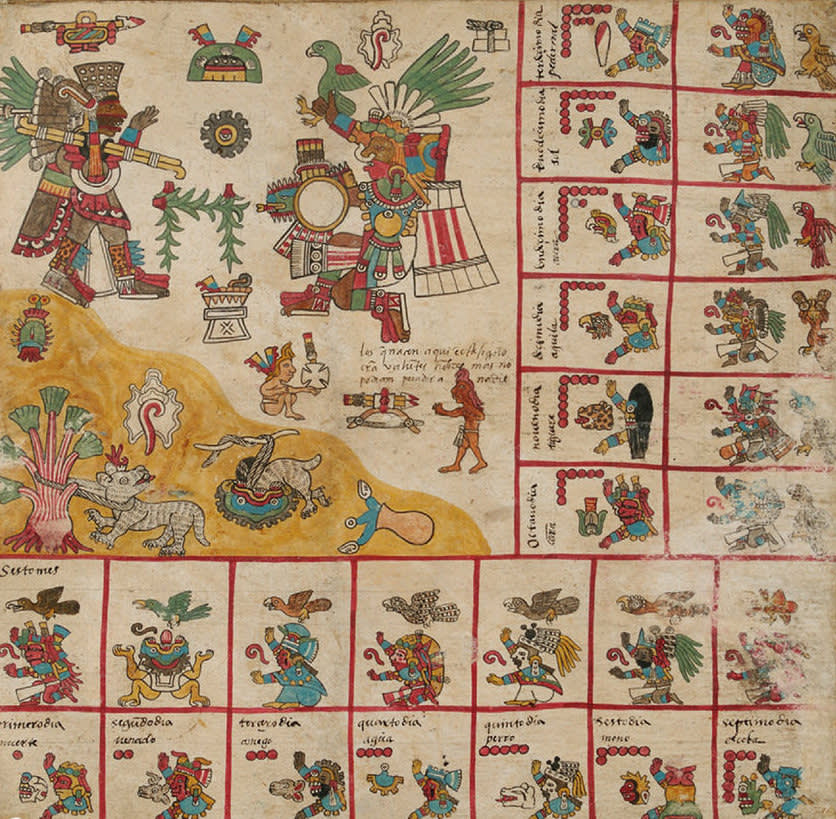
The Codex Borbonicus
Mesoamerican Document discovered by Hernan Cortes, 1519
Another important element of comics that can also be found in these historical examples is the use of iconography. The use of stripped-down images isolates and amplifies the meaning of the image, making it universally discernible. In a sense, it is abstract art that we all understand. Though a smiley face emoji does not realistically depict a human face—yellow, lacking ears, nose, eyebrows, or facial dimension—it is instantly recognizable worldwide. Iconography is the reason we can look at the Codex Borbonicus and determine its meaning, despite being unfamiliar with the Aztec language. When comic artists utilize this technique, readers are able to fill in the gaps with their own imagination, making comics both personal and universal.

The Codex Borbonicus
Discovered by Hernan Cortes, 1519
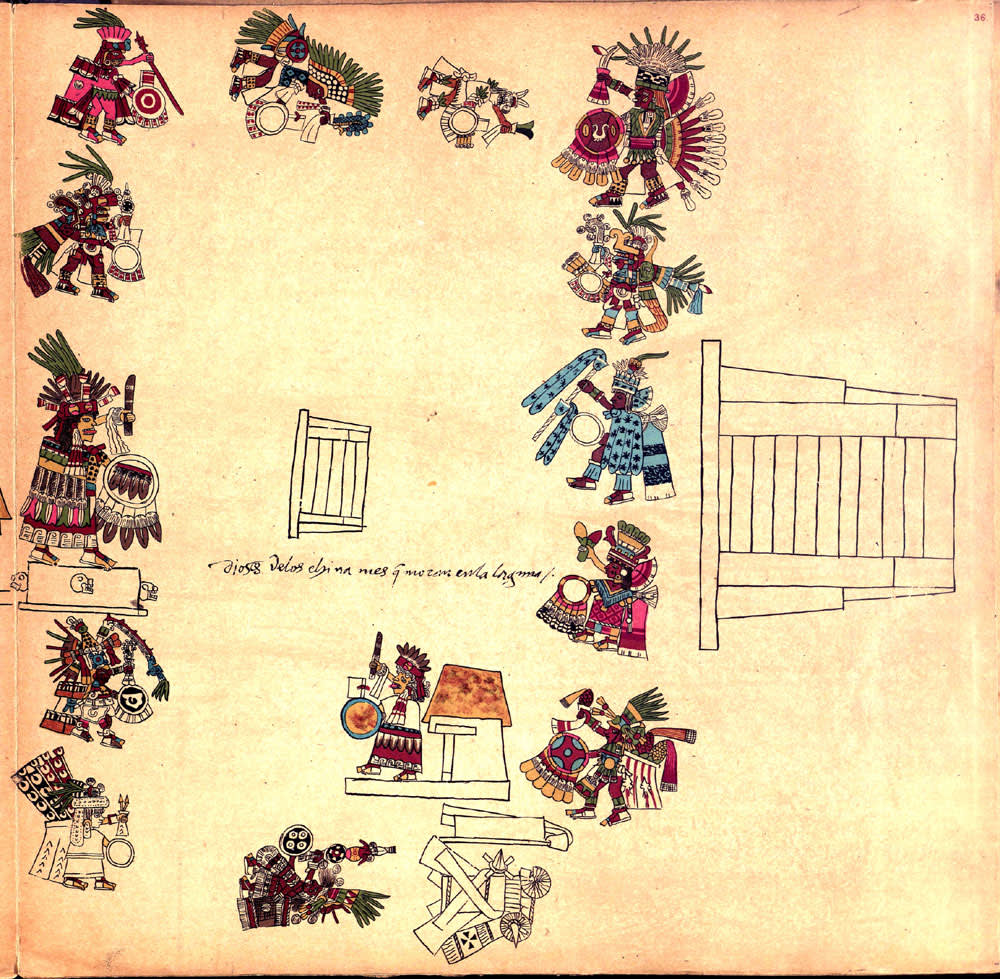
The Codex Borbonicus
Discovered by Hernan Cortes, 1519
Finally, the comic book uses two other elements in order to properly convey its meaning: space and time. Space is represented by what comic artists refer to as the “gutter,” or the space in between individual panels. In its simplest form, this can just become a line separating a box into several parts. As readers, we automatically know that these parts represent the sequence in which the story is meant to be read. In each box, the artist depicts the images that we see, and in the space between the reader logically fills in the blanks based on the information given. If one image shows a superhero approaching a villain, and the next is a sound effect balloon that says “POW!”, one can reasonably assume that the hero punched the villain. Artists can modify the space of the gutter in order to create a rhythm of storytelling, and they can even break the gutter in order to tell more complex stories. If one part of the story is meant to be told quickly, or in a frazzled and confusing manner, the panels can bleed into one another. For emphasis, elements of the image can break out of the panel and spill onto the gutter, telling us that this image is important or disruptive. The gutter can tell us that we’re switching scenes, perspectives, or actions depending on what it looks like. Time in comics allows the artist to depict motion in a still image. Muybridge’s photographic study of a galloping horse made a huge contribution to how artists show movement in a static medium. Marcel Duchamp’s “Nude Descending a Staircase,” painted in 1912, is an excellent artistic depiction of the technique that comic artists still use today. Blurs, streaking effects, and repetition of the subject somehow convey to our brains that the image is in motion. Comic artists have stretched this even further, modifying the various techniques in order to create a sense of more complex movement.
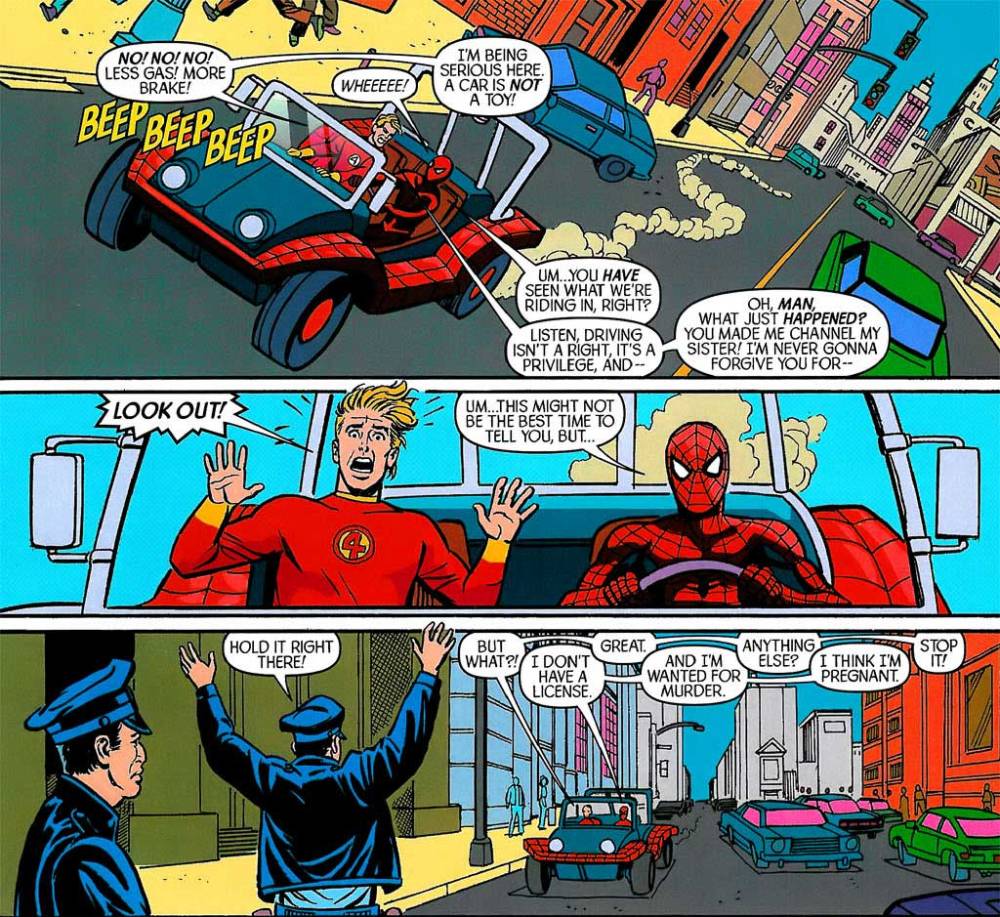
Spiderman Comic
“Gutter", the white space in between individual panels in a comic
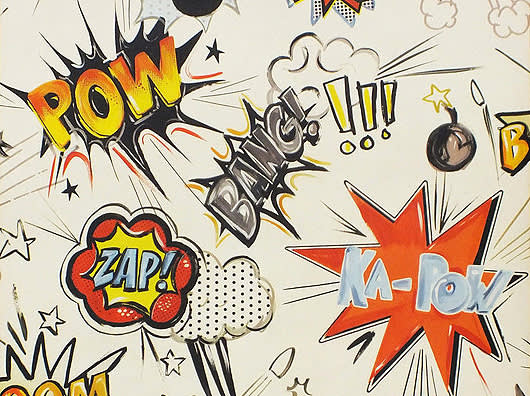
Various Comic Graphics
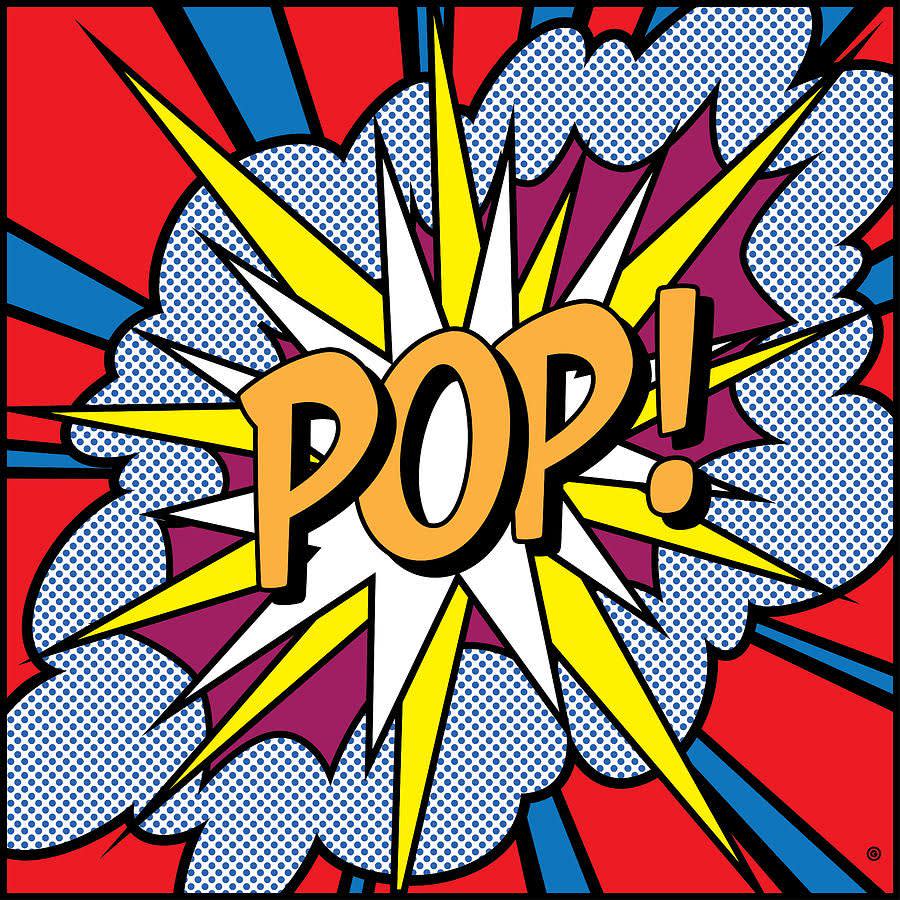
POP
Comic Graphic
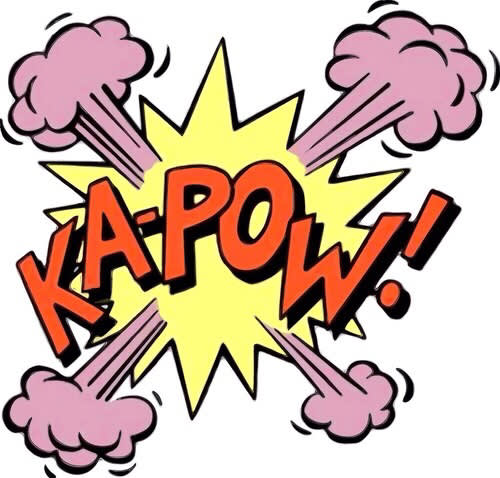
KA-POW
Comic Graphic
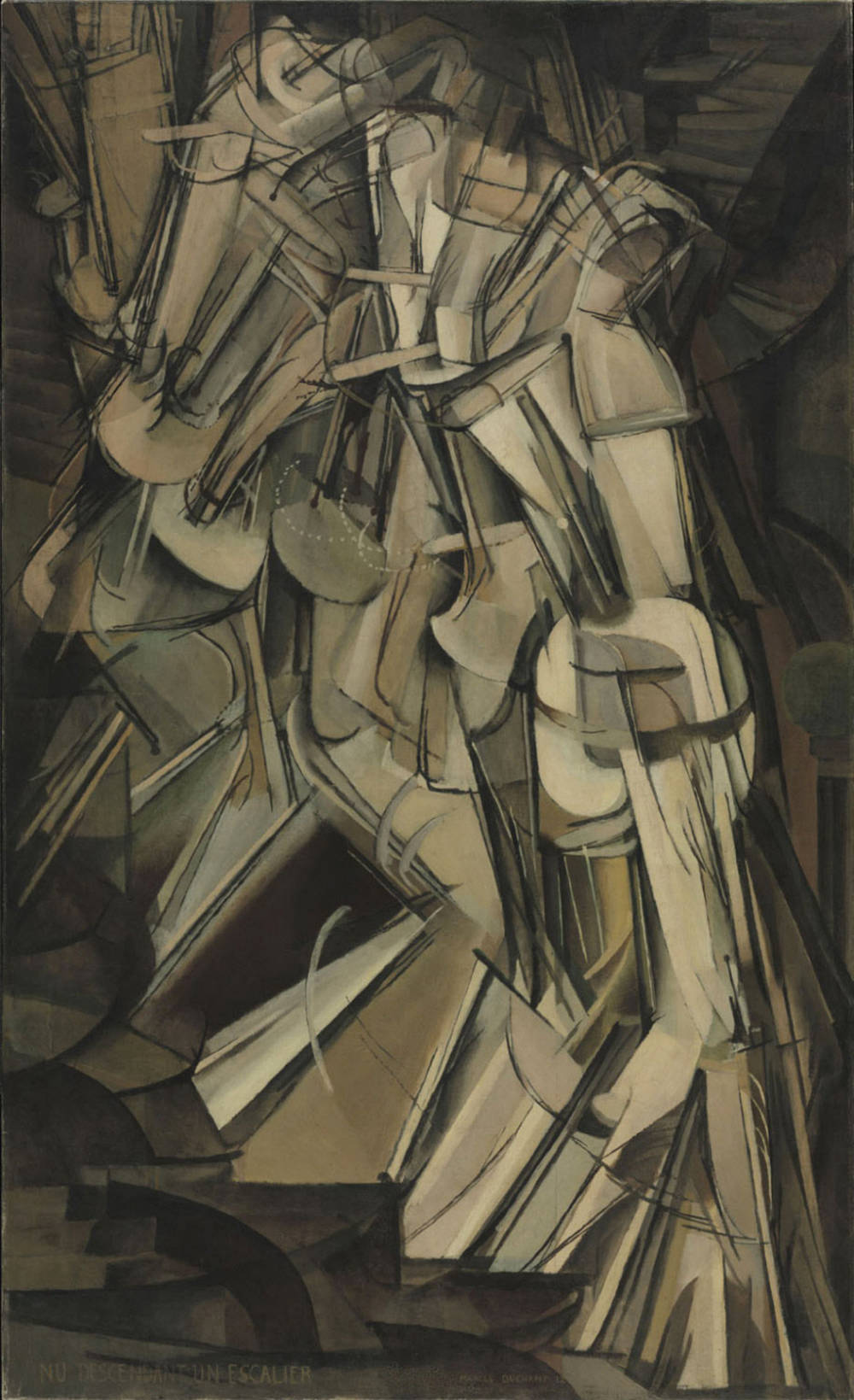
Marcel Duchamp
Nude Descending a Staircase, 1912
Between the time of the first newspaper comic strip, created in 1842 by Rodolphe Topffer titled “The Adventures of Mr. Obadiah Oldbuck,” and 1934’s “Famous Funnies,” comics began to develop their canonical characteristics such as gutters and speech balloons. As the popularity of this art form grew, thanks to its universally readable nature, newspapers began to compete for the best artists. The first appearance of Superman in 1938, created by Jewish-Americans Jerry Siegel and Joe Shuster, launched the “Golden Age” of comics, which saw the rise of the superhero genre. Readership increased significantly during World War II, where cheap entertainment was sought after and depictions of America’s fictional heroes beating real-world villains like Adolf Hitler bolstered patriotism. In the 1950s, the Comics Code Authority responded to a panic about comics’ alleged harmful effects on children by censoring themes like horror and crime, even going so far as to discourage the use of colloquial slang. This led to the “Silver Age” of comic books, wherein superhero sales began to decline starting in 1956. During the “Bronze Age” of comics, from 1970 to 1985, Marvel Comics introduced new superhero characters and comics began to return to darker elements as well as relevant social issues. The period from 1985 through to today is known as the “Modern Age” of comics, a time where many characters images were refreshed, major publishing houses became commercialized while independent comic books grew, and creators gained prominence in the industry.
Famous Funnies
No. 121, 1944
Rodolphe Topffer
The Adventures of Mr. Obadiah Oldbuck, 1842
The universal appeal of the comic book made a deep impression on many modern artists, most notably Andy Warhol. Warhol’s comic-style portrait of Dick Tracy from 1960 as well as paintings of Popeye, Mickey Mouse, and Superman all demonstrate Warhol’s fascination with the medium. The spirit of the comic book even infiltrated its way into Warhol’s personal life: the artist made a low-budget “fan film” called “Batman Dracula” in 1964, and dressed as Batman and Robin for a publicity shot with singer Nico in 1967. Warhol considered Hergé, comic artist and creator of “The Adventures of Tintin,” a major influence in his life’s work, even making a silkscreen of the artist in 1977. Though Warhol never drew traditional comics, his cover art for the 1970 album “Velvet Underground featuring Nico,” is an excellent example of sequential art.
Andy Warhol
Dick Tracy, 1960
Andy Warhol
Superman, 1981
Andy Warhol
Batman Dracula, 1964
Nico and Andy Warhol
Batman and Robin, Esquire, 1967
Andy Warhol
Album cover for The Velvet Underground, 1970
One major contribution to the development of comic books was the invention of the Ben Day process. Invented in 1879 by Benjamin Day, Ben Day dots are an inexpensive method of printing that uses small colored dots that are spaced and overlapped to create colors and shading in printed images. Due to the cheapness of the process and the ability print an array of colors on cheap paper, the Ben Day method became a staple of comic books from the 1950s and 60s. The technique has become immortalized, thanks in part to a handful of artists, to the point that it is still widely recognizable as a comic style today.
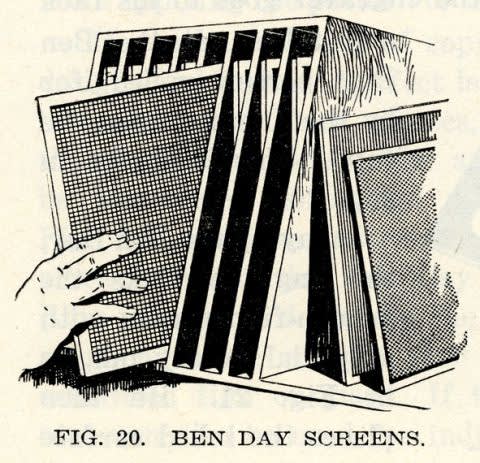
Ben Day
Screens
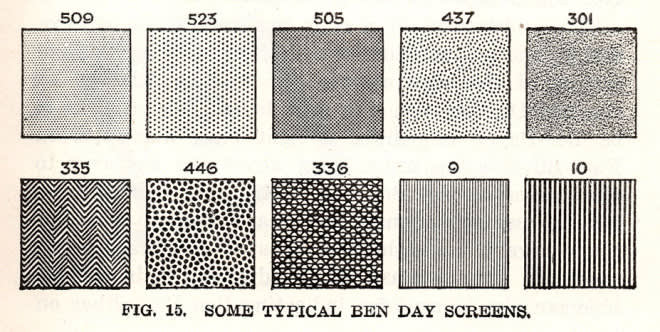
Ben Day
Typical Screen Patterns
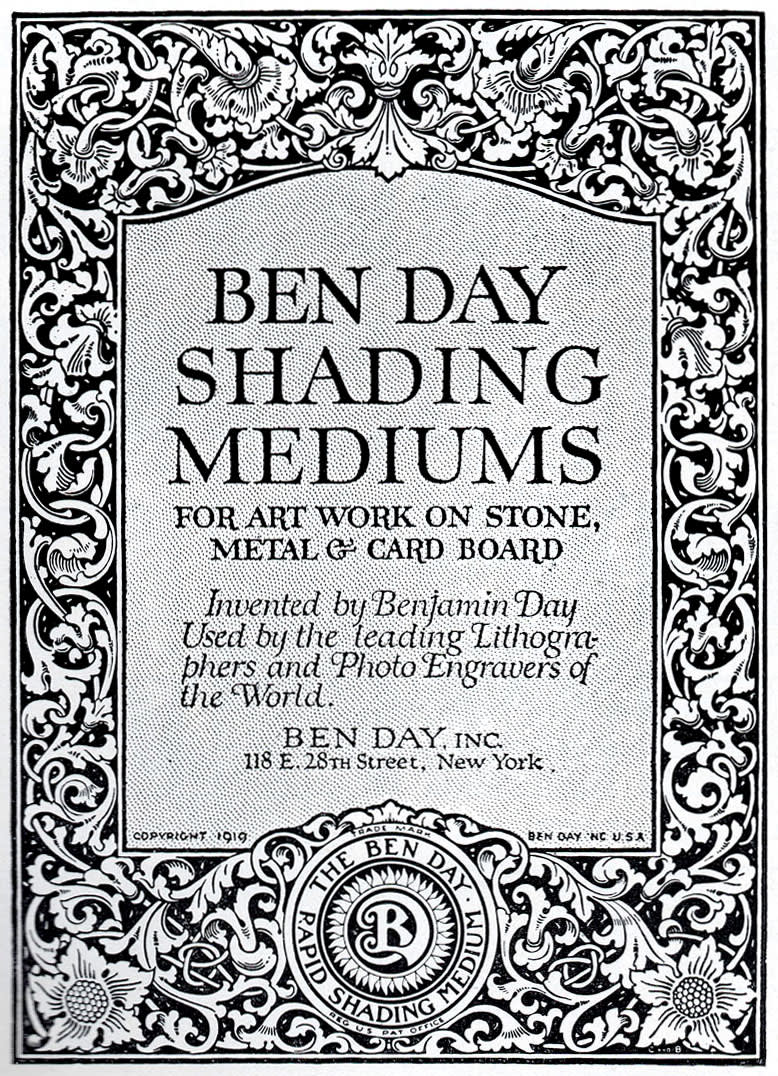
Ben Day
Advertisement
Ben Day dots are most widely associated with American artist Roy Lichtenstein. Lichtenstein modified the method by enlarging the dots, particularly in his reinterpretations of comic book and magazine images. Other artists have further stretched the idea of dots forming together to create a larger image. Damien Hirst’s spot paintings take a contemporary approach to the technique, using a hyper focused version of the dots to create a more abstract image. Yayoi Kusama’s use of dots to create depth and dimension in her works also stems from this technique.
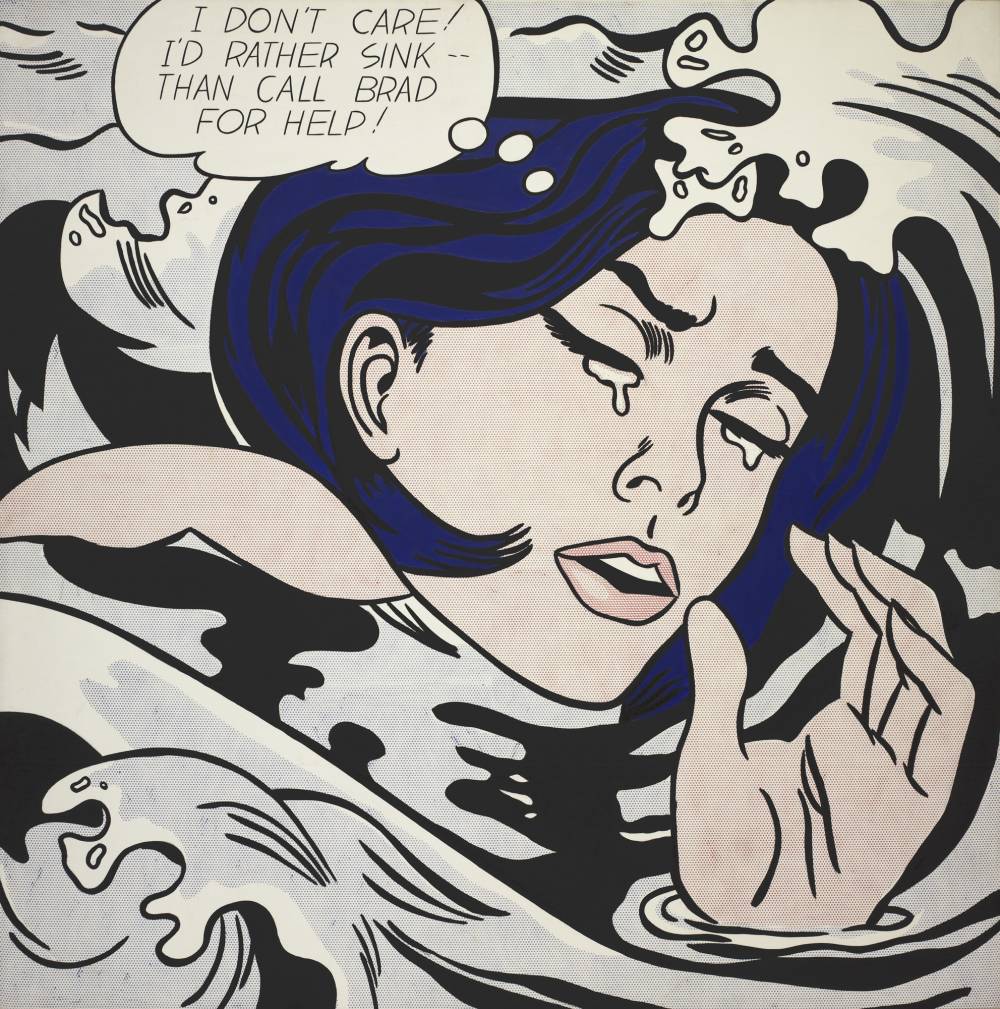
Roy Lichtenstein
Drowning Girl, 1963
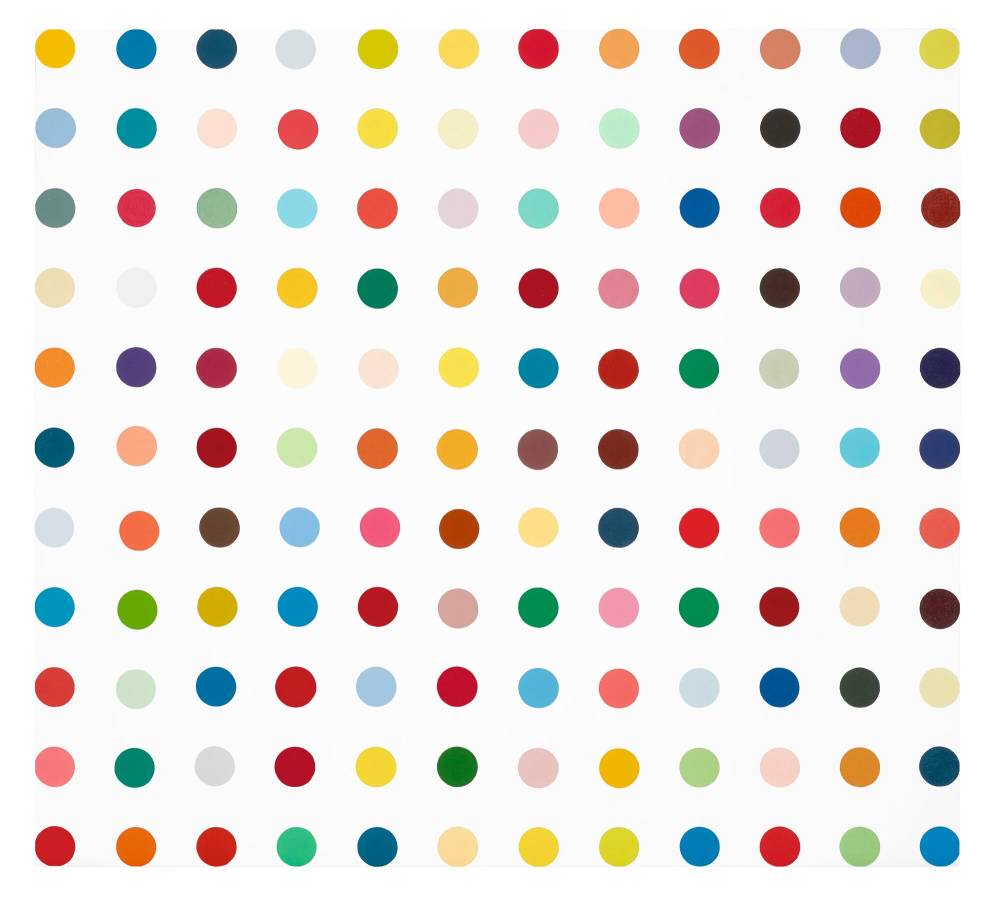
Damien Hirst
Dot Painting, 1992
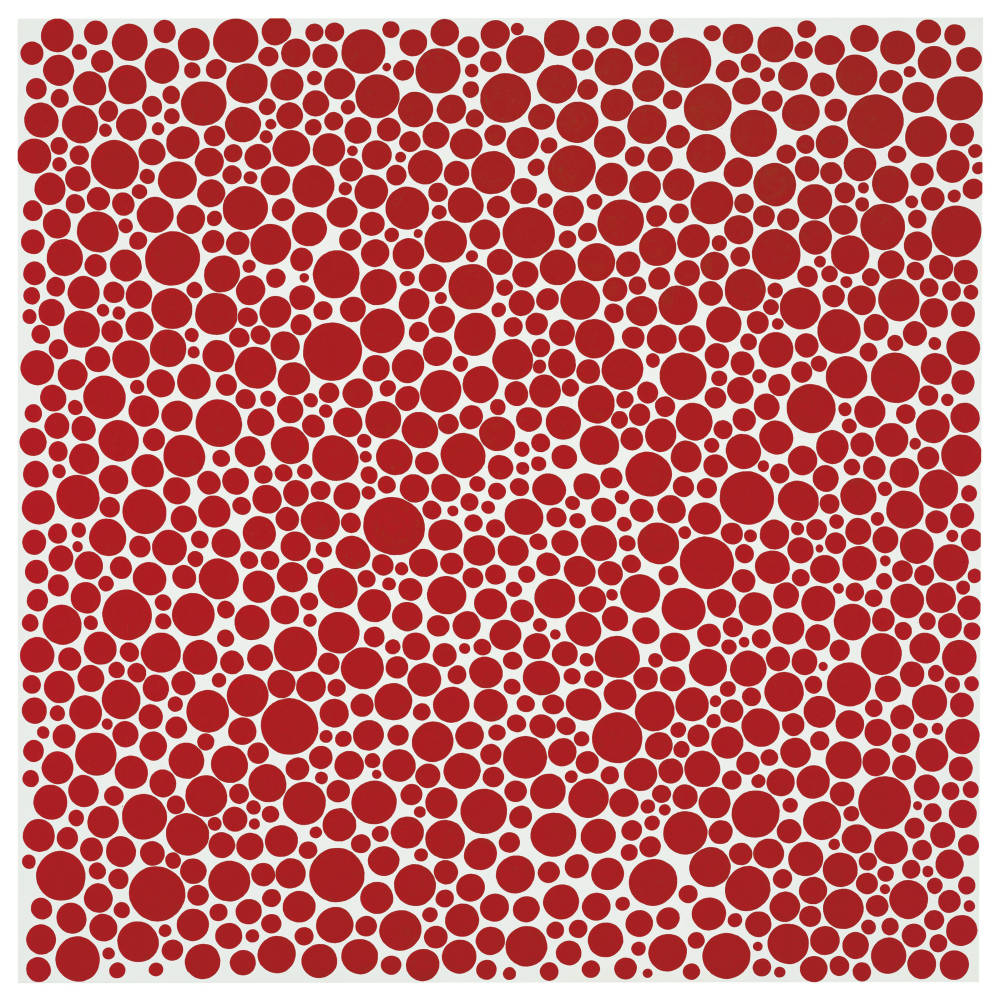
Yayoi Kusama
Red Dots, 2011
Comic books have entranced even the fashion world in recent decades. This makes sense, as both have a reputation as “low brow” and “disposable” art forms, and both utilize storytelling and movement. Yves Saint Laurent made his own comics in 1967, “La Vilaine Lulu,” starring a mischievous girl. Jean-Charles de Castelbajac’s many references to Mickey mouse, especially his 1980 pullover sweater with a sketched image of the character, are a perfect example of iconography in our everyday lives. The Spring 2012 RTW collections by de Castelbajac features various elements of comic design, from geometric shapes to text and characters. Thierry Mugler cites comics as a major influence in his work. In addition to references to various superhero characters throughout his work, Mugler’s Fall1995 couture collection features the latex and capes that we associate with superhero comic characters. Dolce and Gabbana’s Spring/Summer 2007 collection utilizes the typical costume of a female superhero: the bustier, corset-like belt, short skirts, and latex. The sharp geometry and vivid colors of Tom Ford’s Autumn/Winter 2013 collection resemble a comic book’s “POW!” action sound bubble. Prada’s Spring/Summer 2018 collection features vividly-painted blood spatters, comic-covered coats and bags, and illustrated images all paying homage to the comic book’s universality.
Yves Saint Laurent
Sketches for La Vilaine Lulu, 1985
Thierry Mugler
Fall/Winter 1995 Couture
Dolce and Gabbana
Spring/Summer, 2007
Jean-Charles de Castelbajac
Spring/Summer 2012
Jean-Charles de Castelbajac
Spring/Summer 2012
Tom Ford
Fall/Winter 2013
Tom Ford
Fall/Winter 2013
Prada
Spring/Summer 2018
Prada
Spring/Summer 2018
The persistence of comics in the fashion industry was finally recognized in 2008 with the Metropolitan Museum of Art’s Costume exhibit debuting “Superheroes: Fantasy and Fashion,” curated by Andrew Bolton. The exhibit analyzed superhero costumes as symbols of culture, political statements, and utilitarian sportswear. The comic comes together through the utilization of various working parts that come from different artistic movements across the world, from ancient hand scrolls to expressionism. In turn, comics lend themselves to movements in the art world, from Andy Warhol to Miuccia Prada.

Andrew Bolton and Harold Koda
Superheroes: Fashion and Fantasy (Metropolitan Museum of Art Publications)

Andrew Bolton and Harold Koda
Superheroes: Fashion and Fantasy (Metropolitan Museum of Art Publications)

Andrew Bolton and Harold Koda
Superheroes: Fashion and Fantasy (Metropolitan Museum of Art Publications)

Andrew Bolton and Harold Koda
Superheroes: Fashion and Fantasy (Metropolitan Museum of Art Publications)



